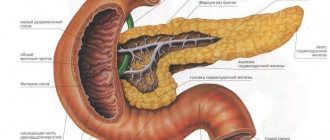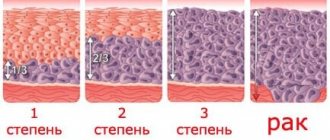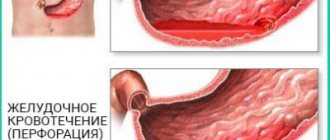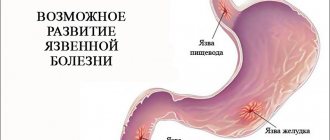Enzymes are essential for literally every chemical activity that occurs in our bodies, from digestion to immune function to blood flow. The action of protease in the body is aimed at ensuring that we see, think and breathe well. What is a protease? This is an enzyme that allows you to break down proteins in the body.
Because of this, proteolytic enzymes are at the forefront of biological research. They have become a major focus for the pharmaceutical industry. According to a scientific review published in the Biochemical Journal:
“The predominant use of proteases has been in the treatment of cardiovascular diseases. However, proteases are becoming useful agents in the treatment of sepsis, digestive disorders, inflammation, and cystic fibrosis. As well as retinal diseases, psoriasis and much more."
But what exactly does protease do, and why is it so important to our overall health? These are complex enzymes, and researchers are still studying their role in the human body. Let's try to figure it out and understand their importance.
What is a protease? Definition of protease and role in the body
Proteases have been called biological versions of Swiss Army knives, capable of cutting long sequences of proteins into fragments. A protease is an enzyme that breaks down long, chain-like protein molecules so they can be digested. This process is called proteolysis. It converts protein molecules into shorter fragments called peptides and eventually into their components called amino acids. We need a constant supply of amino acids for proper growth and repair.
Proteins are rigid, complex, folded structures and can only be broken down or disassembled by protease enzymes. The process of protein digestion begins in the stomach, where hydrochloric acid opens up the proteins and the enzyme pepsin begins to disassemble them. The pancreas secretes protease enzymes (mainly trypsin). And in the intestines they break protein chains into smaller pieces. Enzymes on the surface and inside the intestinal cells then break down the pieces even more. They convert them into amino acids, which are ready for use throughout the body.
When these protease enzymes are not present in the body to break down protein molecules, the intestinal lining will not be able to digest them. This can lead to serious health problems.
Proteases are produced by the pancreas and are also found in some fruits, bacteria and other microbes. The digestive tract produces three different forms of protease: trypsinogen, chymotrypsinogen and procarboxypeptidase. These three proteases attack different peptide bonds, allowing the generation of amino acids, the building blocks of protein.
What is the action of protease in the body? Almost everything! These enzymes ensure the proper functioning of our digestive and immune systems, kidneys, liver, spleen, pancreas and bloodstream. Protease plays a role in regulating metabolic function and allowing the vitamins and minerals we take to work properly. And, in addition, proteases are necessary for the normal functioning of hormones and contribute to muscle recovery and tissue healing.
What is the gastric compartment
Gastric juice is a substance with a sour taste. The average weight of gastric juice is from 1.002 to 1.007 g/cm3. No color. The acid index ranges from 0.9 to 1.5. The acidic reaction is caused by the hydrochloric acid content of gastric juice. Other characteristics are:
- water - approximately 99.5% (for this reason, its color is normally absent);
- the presence of dry components of gastric juice - 0.5%;
- mineral components of gastric juice - salts of sulfuric, hydrochloric acids, sodium, calcium and other elements;
- the presence of enzymes that play an important role in digestion, creatinine and other components is detected.
The composition of gastric juice includes such highly active substances as:
- Pepsin-A ensures the hydrolyzing activity of gastric secretions into proteins.
- Pepsin-C metabolizes hemoglobin.
- Gelatinase dissolves gelatin and collagen.
- Chymosin promotes the breakdown of casein.
- Lipase is produced to digest milk fats.
- Lysozyme provides a bactericidal effect. Minor amounts of this enzyme are formed in the oral cavity.
- Urease breaks down urea.
- Castle factor plays an important role in digestion: it absorbs cyanocobalamin.
There are total, free and protein-bound hydrochloric acid. Their exact content is shown by the biochemistry of gastric contents.
Sometimes the color of the liquid may change. If it is yellowish, it means that there are bile impurities in the stomach. A red or brownish tint indicates that blood has entered the stomach. A putrid odor indicates that intense processes of decay or fermentation are occurring in this organ.
Important! If, according to the diagnostic results, the color of the stomach secretion changes in the patient, he needs to undergo an additional diagnostic examination. This condition may indicate the development of dangerous pathologies.
Types of Proteases
Protease enzymes are often classified based on their origin. Some proteases are produced in our bodies, some in plants, and others are of microbial origin. Different types of proteases have different biological processes and mechanisms.
Our digestive system naturally produces three types of proteases: pepsin, trypsin and chymotrypsin. Here's a breakdown of these three types of proteases:
Pepsin
Pepsin is a natural protease found in the intestines. It is necessary for the breakdown and digestion of proteins. Cells in the stomach begin to produce an inactive enzyme called pepsinogen, which turns into pepsin when it enters the acidic environment of the stomach. Pepsin then breaks down the chemical bonds in proteins, producing smaller molecules called peptides. This is the first phase of protein digestion.
Trypsin
Trypsin is a protease enzyme that is produced in the pancreas in an inactive form called trypsinogen. It is then mixed with bile and enters the small intestine, where it is converted into active trypsin. Trypsin works with pepsin and chymotrypsin to break down proteins into peptides and amino acids.
Chymotrypsin
Chymotrypsin is also produced in the pancreas and acts as a component of pancreatic juice in the small intestine. It breaks down protein molecules into peptides. Chymotrypsin is activated in the presence of trypsin.
Proteases are also found in certain foods and are available as supplements. There are two types of plant-based protease enzymes:
Bromelain
Bromelain is a protease found in the stem and juice of pineapple. Bromelain supplements are commonly used for digestive disorders, faster recovery from surgery or injury. As well as symptoms of allergies, sinus infections and joint pain.
Papain
Papain is a protease enzyme found in papaya latex, especially when it is unripe. Papain stimulates digestion and improves overall nutrient absorption, which is why it is often used in digestive enzyme supplements.
Study of gastric juice
The study of gastric juice is carried out in humans using gastric intubation against the background of the use of various natural and pharmacological stimuli, in animals - using artificially created according to improved I.P. Pavlov's method of isolated ventricle. Gastric juice obtained from animals was used internally in the treatment of certain diseases of the digestive system. Bicarbonates
HCO3 bicarbonates are necessary to neutralize hydrochloric acid at the surface of the mucous membrane of the stomach and duodenum in order to protect the mucosa from the effects of acid. Produced by superficial accessory (mucoid) cells. The concentration of bicarbonates in gastric juice is 45 mmol / l.
Pepsinogen and pepsin
Pepsin is the main enzyme that breaks down proteins. There are sprat isoforms of pepsin, each of which affects its own class of proteins. Pepsin is released from pepsinogens when the latter enter an environment with a certain acidity. The main cells of the fundic glands are responsible for the production of pepsinogens in the stomach.
Slime
Mucus is the most important factor in protecting the gastric mucosa. The mucus forms a mixed layer of gel, about 06 mm thick, which concentrates bicarbonates, which neutralize the acid and thereby protect the mucous membrane from the damaging effects of hydrochloric acid and pepsin. Produced by superficial accessory cells.
Castle's internal factor
Intrinsic Castle factor is an enzyme that converts the inactive form of vitamin B12 supplied with food into the active form, which is absorbed. It is secreted by the parietal cells of the fundic glands of the stomach.
Chemical composition of gastric juice
The main chemical components of gastric juice: - water (995 g / l); — Chlorides (5-6 g/l); — Sulfates (10 mg/l); — Phosphates (10-60 mg/l); — Bicarbonates (0-12 g/l) of sodium, potassium, calcium, magnesium; — Ammonia (20-80 mg/l). Volume of gastric juice production
About 2 liters of gastric juice are produced in the stomach of an adult per day. Basal (that is, in a state of calm, not stimulated by food, chemical stimulants, etc.) Secretion in men is (25-30% less in women): - gastric juice - 80-100 ml / h; — Hydrochloric acid — 25-50 mmol/h; — Pepsin — 20-35 mg/h. Maximum production of hydrochloric acid in men is 22-29 mmol/h, in women — 16-21 mmol/h.
Physical properties of gastric juice
Gastric juice is practically colorless and odorless. A green or yellowish color indicates the presence of bile impurities and pathological duodenogastric reflux. The red or brown tint may be from blood impurities. An unpleasant putrid odor is usually the result of serious problems with the evacuation of gastric contents into the intestines. Normally, gastric juice contains only a small amount of mucus. A noticeable amount of mucus in the gastric juice indicates inflammation of the gastric mucosa.
TOP 6 benefits of protease
1.The action of protease in the body to improve digestion
Enzymes play an important role in our digestive health, and proper digestion depends on protease processes. They have a distinct ability to break peptide bonds and release amino acids. Proteases are needed to break down proteins so they can be digested. They also break down other wastes, including toxins. This is important for digestive and immune function as it prevents toxic overload that can make us sick.
Research shows that proteolytic enzymes, especially bromelain, help reduce the severity of symptoms associated with inflammatory bowel disease. And also ulcerative colitis, thanks to their anti-inflammatory properties.
2.The action of protease in the body is to promote the absorption of amino acids
Protease allows you to absorb amino acids, which are vital for the construction and repair of tissue. A protein is made up of a specific sequence of amino acids. When a protease breaks these sequences apart, it allows us to use the amino acids for a number of body functions. We need an optimal balance of amino acids to maintain homeostasis in the body. Because they regulate key metabolic pathways necessary for growth, immune maintenance and reproduction.
3. Action of protease in the body - increases immune function
Protease enzymes increase the activity of natural killer cells and destroy pathogenic complexes that can reduce normal immune function. Research shows that papain, trypsin and other proteases can prevent or destroy existing pathogenic immune complexes. Thereby enhancing lymphatic drainage and strengthening the immune system.
Pathogen complexes are a normal part of the immune system. However, when they occur in excess, they can cause certain diseases. Including kidney disease, rheumatological diseases and nerve inflammation.
4.The action of protease in the body prevents the formation of blood clots and atherosclerosis
Protease improves the quality of our blood cells. These enzymes are responsible for the formation and dissolution of blood clots. They also have anticoagulant, anti-inflammatory and antihypertensive effects.
Protease supplements have been developed and used to treat thrombotic diseases since the 1970s. Papain, a protease found in papayas, may help prevent thickening of blood vessels, a heart condition called atherosclerosis. Bromelain, a protease found in pineapple, has anticoagulant properties and may reduce the risk of blood clots . They lead to dangerous complications such as coronary heart disease, pulmonary embolism and stroke.
5.The action of protease in the body accelerates tissue repair
Since ancient times, proteases have been used to promote tissue repair. According to a scientific review published in the journal Advances in Therapy
“Trypsin and chymotrypsin help reduce inflammation and promote faster repair of acute tissue damage.”
The combination of these enzymes is commonly used in oral proteolytic enzyme supplements to repair traumatic, surgical and orthopedic injuries. Along with their anti-inflammatory effects, protease enzymes also work as anti-infective, antioxidant, anti-blood clot and decongestant agents.
6.Protease action in the body - helps prevent colon cancer
Research shows that proteases found in certain foods (such as papaya) can bind to carcinogenic toxins in the colon. They keep them away from healthy colon cells. According to research published in the World Journal of Gastroenterology, protease enzymes are involved in the degradation of cancer invasion and metastasis. Researchers indicate that proteases serve as potential target molecules for therapeutic agents in the treatment of colorectal cancer .
Benefits and Uses of Pepsin
How does pepsin work in the body? Pepsin's main functions are to break down (or denature) proteins, but it also does other jobs. For example, pepsin promotes the absorption of nutrients and the destruction of harmful microbes. The role of digestive enzymes is primarily to act as a catalyst for chemical reactions in the body. Digestive enzymes convert large molecules into more easily absorbed particles that the body can use for survival and well-being.
There are several main reasons why some people will benefit from supplementing with pepsin enzymes. Benefits and uses of pepsin include:
- Helps the body break down difficult-to-digest proteins.
- Helps treat indigestion and leaky gut by relieving stress from the gastrointestinal tract.
- Relief of symptoms of pancreatitis, which interferes with the ability to properly produce enzymes needed to break down food.
- Helps in the production of antibodies and digestion of IgG immunoglobulin.
- Stimulation of bile secretion.
- Helps detoxify the liver.
- Improves symptoms of acid reflux, heartburn and other problems such as irritable bowel syndrome.
- Improves nutritional absorption and prevents nutritional deficiencies, including vitamin B12, iron and calcium.
- Counteracts enzyme inhibitors in foods such as peanuts, wheat germ, egg whites, nuts, seeds, beans and potatoes.
- Used to treat a wide range of health problems, such as dyspepsia (recurrent pain or discomfort in the upper abdomen), vomiting caused by morning sickness during pregnancy, nausea and diarrhea, and stomach upset associated with cancer treatment.
Although pepsin is an important digestive enzyme and has many benefits, there are certain digestive problems that are associated with pepsin dysfunction.
It is called GERD (gastroesophageal reflux disease) and laryngopharyngeal reflux (or extraesophageal reflux). This occurs when pepsin, acid, and other substances from the stomach enter the esophagus. Pepsin may remain in the larynx after gastric reflux. When someone has reflux of the larynx and pharynx, it means that pepsin and acid are traveling all the way to the larynx.
GERD and laryngopharyngeal reflux can cause discomfort and even serious damage to the lining of the esophagus and larynx. These conditions typically cause symptoms including acid reflux, chest burning, hoarseness, chronic cough, and involuntary contraction of the vocal cords.
Pepsin enzymes are able to adhere to the cells of the larynx, deplete their protective properties and destroy membranes/tissues (so-called endocytosis). This may potentially increase the risk of developing cancer of the esophagus and larynx ().
Extraesophageal reflux is detected by testing acidification using a pH probe and detecting pepsin in saliva and exhaled breath. Research shows that proton pump inhibitors do not help most people with extraesophageal reflux.
While pepsin is implicated in conditions such as GERD, this problem occurs when the lower esophageal sphincter valve is weak or does not relax properly. This can happen due to inflammation, hernia or obesity. As a result, the contents of the stomach enter the esophagus. In many cases, GERD can be reduced through diet and lifestyle changes that help reduce inflammation ().
Protease versus proteinase and proteasome
It is easy to get confused by the many terms that are used when discussing protease. Protease is a general term for enzymes that degrade proteins by hydrolyzing peptide bonds. Researchers realized that there are two different types of protease enzymes, although they are usually grouped together. According to a study published in the Biochemical Journal,
“One group of protease enzymes works best on intact proteins. While other enzymes prefer small peptides as substrates."
A proteinase is a type of protease that prefers intact proteins. Proteinase works to break the internal peptide bonds of long peptide chains. It is important for normal physiological functions and is used for pharmaceutical purposes.
Proteasomes are also protease complexes that participate in proteolysis, affecting the breakdown of proteins in the body. Proteasomes are responsible for the degradation of intracellular proteins.
Protease compared to Amylase, Lipase and Pepsin
Protease
Protease is a general term used to describe any enzyme that breaks down protein. Pepsin begins this process in the stomach, and trypsin and chymotrypsin are produced in the pancreas and released into the small intestine. These three types of protease work to fully digest protein by breaking it down into simple amino acids that are absorbed into the bloodstream.
Amylase
Amylase is a digestive enzyme that breaks down starch into simple sugars so they can be used for energy. First, amylase is secreted by the salivary glands. Therefore, it can begin the digestion process as soon as we start chewing food. This causes the start of the domino effect that is the digestive process. In a nutshell, gastric amylase promotes the breakdown of partially digested food into chyme, which causes the release of the hormone secretin. This allows the pancreas to release pancreatic enzymes that will complete the digestion process.
Lipase
Lipase is a digestive enzyme that breaks down dietary fats so that the intestines can absorb them. The lipase is released primarily by the pancreas as pancreatic lipase. However, it is also found in blood, gastric juice, intestinal juice and adipose tissue. Bile begins the process of fat digestion, turning fats into small fat globules. Lipase then converts these globules into fatty acids and glycerol, a simple compound found in all lipids. It is used by our cells to produce energy. Because lipase is essential for the proper digestion of fat, it affects many body functions. Including nutrient absorption, cholesterol regulation and metabolism.
Pepsin
Pepsin is a type of protease that is produced in the stomach. Like all proteases, pepsin breaks down proteins into peptides. It is one of three proteases in the human digestive system—the other two are trypsin and chymotrypsin. Pepsin is involved in the first phase of protein digestion.
What do stomach enzymes break down?
The digestive glands play a major role in the chemical transformation of food taken by humans. Namely, their secretion. This process is strictly coordinated. In the gastrointestinal tract, food is exposed to different digestive glands. Thanks to the entry of pancreatic enzymes into the small intestine, proper absorption of nutrients and a normal digestion process occur. In this whole scheme, enzymes necessary for the breakdown of fat play an important role.
Digestive enzymes have the narrowly focused task of breaking down complex substances that enter the gastrointestinal tract with food. These substances are broken down into simple ones that are easy for the body to absorb. In the mechanism of food processing, enzymes, or enzymes that break down fat, play a special role (there are three types). They are produced by the salivary glands and the stomach, in which enzymes break down a fairly large volume of organic substances. These substances include fats, proteins, and carbohydrates. As a result of the influence of such enzymes, the body qualitatively assimilates the incoming food. Enzymes are needed for accelerated reactions. Each type of enzyme is suitable for a specific reaction, acting on the corresponding type of bond.
For better absorption of fats, gastric juice containing lipase works in the body. This enzyme, which breaks down fat, is produced by the pancreas. Carbohydrates are broken down by amylase. After disintegration, they are quickly absorbed and enter the bloodstream. Salivary amylase, maltase, and lactase also contribute to breakdown. Proteins are broken down thanks to proteases, which are also involved in the normalization of the microflora of the gastrointestinal tract. These include pepsin, chymosin, trypsin, erepsin and pancreatic carboxypeptidase.
Lipase is an enzyme whose main task is to dissolve, fractionate and digest fats in the human digestive tract. Fats entering the intestines are not able to be absorbed into the blood. To be absorbed, they must be broken down into fatty acids and glycerol. Lipase helps in this process. If there is a case where the enzyme that breaks down fat (lipase) is reduced, it is necessary to carefully examine the person for oncology.
Pancreatic lipase in the form of an inactive proenzyme of prolipase is excreted into the duodenum. Prolipase is activated under the influence of bile acids and colipase, another enzyme from pancreatic juice. Lingual lipase is produced in infants by the oral glands. It is involved in the digestion of breast milk.
Hepatic lipase is secreted into the blood, where it binds to the vascular walls of the liver. Most fats from food are broken down in the small intestine by lipase from the pancreas.
Knowing which enzyme breaks down fats and what exactly the body cannot cope with, doctors can prescribe the necessary treatment.
The chemical nature of almost all enzymes is protein. The pancreas is simultaneously an organ of the digestive and endocrine systems. The pancreas itself is actively involved in the digestion process, and the main gastric enzyme is pepsin.
Amylase breaks down starch into oligosaccharides. The oligosaccharides are then broken down into glucose by other digestive enzymes. Glucose is absorbed into the blood. For the human body it is a source of energy.
All human organs and tissues are built from proteins. The pancreas is no exception, which activates enzymes only after they enter the lumen of the small intestine. When the normal functioning of this organ is disrupted, pancreatitis occurs. This is a fairly common disease. A disease in which there is no enzyme that breaks down fats is called pancreatic insufficiency: exocrine or intrasecretory.
Exocrine insufficiency reduces the production of digestive enzymes. In this case, a person cannot eat large amounts of food, since the function of breaking down triglycerides is impaired. Such patients, after eating fatty foods, experience symptoms of nausea, heaviness, and abdominal pain.
With intrasecretory insufficiency, the hormone insulin, which helps absorb glucose, is not produced. A serious disease occurs, which is called diabetes mellitus. Another name is diabetes diabetes. This name is associated with an increase in urine production by the body, as a result of which it loses water and the person feels constant thirst. Carbohydrates almost do not enter the cells from the blood and therefore are practically not used for the body’s energy needs. The level of glucose in the blood increases sharply, and it begins to be excreted through the urine. As a result of such processes, the use of fats and proteins for energy purposes increases greatly, and products of incomplete oxidation accumulate in the body. Ultimately, the acidity in the blood also increases, which can even lead to a diabetic coma. In this case, the patient experiences respiratory distress, including loss of consciousness and death.
This example clearly shows how important enzymes are that break down fats in the human body so that all organs work harmoniously.
If any problems arise, you definitely need to solve them and help the body with the help of various treatment methods and medications.
Glucagon has the opposite effect of insulin. This hormone affects the breakdown of glycogen in the liver and the conversion of fats into carbohydrates, thereby increasing the concentration of glucose in the blood. And the hormone somatostatin inhibits the secretion of glucagon.
In medicine, enzymes that break down fats in the human body can be obtained with the help of medications. There are many of them - from the most famous brands to little-known and less expensive, but just as effective. The main thing is not to self-medicate. After all, only a doctor, using the necessary diagnostic methods, can select the right drug to normalize the functioning of the gastrointestinal tract.
However, often we only help the body with enzymes. The hardest part is getting it to work correctly. Especially if the person is already elderly. It is only at first glance that it seems that you bought the necessary pills - and the problem is solved. In reality, everything is completely different. The human body is a perfect mechanism, which nevertheless ages and wears out. If a person wants it to serve him as long as possible, it is necessary to support it, diagnose and treat it on time.
Of course, after reading and finding out which enzyme breaks down fats during human digestion, you can go to the pharmacy and ask the pharmacist to recommend a drug with the desired composition. But this can only be done in exceptional cases, when for some compelling reason it is not possible to visit a doctor or invite him to your home. You need to understand that you can be very wrong and the symptoms of different diseases can be similar. And in order to make a correct diagnosis, you definitely need medical help. Self-medication can cause serious harm.
Gastric juice contains pepsin, hydrochloric acid and lipase. Pepsin acts only in an acidic environment and breaks down proteins into peptides. Lipase in gastric juice breaks down only emulsified (milk) fat. The fat-digesting enzyme becomes active only in the alkaline environment of the small intestine. It comes along with the composition of the food semi-liquid gruel, pushed out by the contracting smooth muscles of the stomach. It is pushed into the duodenum in separate portions. Some small part of the substances is absorbed in the stomach (sugar, dissolved salt, alcohol, pharmaceuticals). The digestion process itself mainly ends in the small intestine.
Food advanced into the duodenum receives bile, intestinal and pancreatic juices. Food moves from the stomach to the lower sections at different speeds. Fatty ones linger, but dairy ones pass quickly.
Pancreatic juice is an alkaline liquid that is colorless and contains trypsin and other enzymes that break down peptides into amino acids. Amylase, lactase and maltase convert carbohydrates into glucose, fructose and lactose. Lipase is an enzyme that breaks down fats into fatty acids and glycerol. Digestion time and juice release depend on the type and quality of food.
The small intestine performs parietal and cavity digestion. After mechanical and enzymatic treatment, the breakdown products are absorbed into the blood and lymph. This is a complex physiological process that is carried out by the villi of the small intestine and the villi from the intestine are directed strictly in one direction.
Amino acids, vitamins, glucose, and mineral salts in the aqueous solution are absorbed into the capillary blood of the villi. Glycerol and fatty acids do not dissolve and cannot be absorbed by the villi. They move into epithelial cells, where fat molecules are formed that enter the lymph. Having passed the barrier of the lymph nodes, they enter the blood.
Bile plays a very important role in the absorption of fats. Fatty acids, combining with bile and alkalis, are saponified. In this way, soaps (soluble salts of fatty acids) are formed that easily pass through the walls of the villi. The glands in the large intestine primarily secrete mucus. The large intestine absorbs water up to 4 liters per day. A very large number of bacteria live here, participating in the breakdown of fiber and the synthesis of vitamins B and K.
Materials: https://fb.ru/article/323192/fermentyi-rasscheplyayuschie-jir-v-organizme-cheloveka
Protease Supplements and Dosage
A variety of protease drugs are used as part of the treatment of stroke, hemophilia, acute myocardial infarction, sepsis, and traumatic bleeding. As well as digestive disorders and muscle spasms.
There are several different types of over-the-counter protease supplements currently on the market. It is possible to find bromelain and papain supplements online or in health food stores. And also purchase trypsin, which is usually made from bacteria, fungi or pork. Products containing chymotrypsin are also available and are usually made from a bovine or porcine source.
According to information presented in a Mayo Clinic article intended to inform physicians about enzyme supplements, the use and dosage of protease enzyme supplements are as follows:
- Bromelain - up to 400 mg per day for swelling, burns, inflammation and allergic rhinitis
- Papain - up to 1500 mg per day for inflammation, digestion, shingles symptoms, chronic diarrhea and pharyngitis
- Trypsin – up to 50 mg per day (usually in combination with bromelain) for osteoarthritis and digestive enzymes
- Chymotrypsin—up to 100,000 units four times daily to reduce inflammation and swelling associated with ulcers, surgery, abscesses, or traumatic injuries
Proteases are usually taken in combination with two other vital enzymes: amylase, which breaks down carbohydrates, and lipase, which breaks down fats. When these digestive enzymes work properly in our body, the digestive system will function optimally. Taking digestive enzyme supplements can help people with digestive diseases and age-related enzyme deficiencies. As well as low acidity (so-called hypochlorhydria), liver disease and lack of nutrients.
If you decide to take protease supplements, we recommend considering the following options:
- Now Foods, Super Enzymes, 180 Capsules
- American Health, Papaya Enzyme with Chlorophyll, 250 Chewable Tablets
- American Health, Super Papaya Enzyme Plus, 360 Chewable Tablets
- 21st Century, Digestive Enzymes, 60 Capsules
- Now Food, Papaya Chewable Enzymes, 360 Lollipops
- Kyolic, Aged Garlic Extract, Candida Cleanse & Digestion, Formula 102, 200 Vegetarian Capsules
Protease inhibitors and protease deficiency
What is a protease inhibitor? It is an antiviral drug that is commonly used to treat patients with HIV and hepatitis C. Protease inhibitors prevent the virus from replicating by blocking the protease. Therefore, the new HIV will not become a mature virus that can infect other cells (particularly CD4 cells). Basically, these drugs are designed to reduce the amount of HIV in the body to slow the progression of the virus.
To replicate, the HIV virus uses immune cells in the body called CD4 cells, so it will spread. Protease enzymes allow this replication, but HIV protease inhibitor drugs block the enzymes, preventing the virus from replicating.
These types of medications have well-known side effects and interact with other medications. Therefore, if you are living with HIV or hepatitis C, you should consult with your doctor before adding protease inhibitors to your treatment plan.
People who are not infected with HIV or hepatitis C should make sure they produce enough protease. When the body is functioning properly, it will produce enough protease to break down the protein. However, when the body does not produce enough protease, it can lead to diseases affecting the metabolic, digestive system. As well as the cardiovascular and immune systems.
What are the signs of protease deficiency? Someone who does not consume or produce enough protease enzymes may experience the following deficiency symptoms:
- gas formation
- spasms
- heartburn
- stomach upset
- abdominal discomfort
- diarrhea
- constipation
- joint stiffness
- fatigue
- premature skin wrinkles
- White hair
Pathologies due to lack of gastric enzymes
A lack of enzymes in gastric juice leads to indigestion and the development of fermentation and putrefaction processes. If protein does not begin to be digested in the stomach, then later in the intestines it cannot be broken down into amino acids. This pathological process causes an excess of free proteins. In addition to pathologies of the digestive tract, another problem arises: proteins bind to substances foreign to the body—antigens—contained in the intestines. As a result, a so-called complete antigen is formed. It reacts with lymphocytes and provokes the production of antibodies by the human immune system. These disorders lead to the development of various skin diseases: eczema, dermatitis, urticaria, neurodermatitis.
Long-term deficiency of stomach enzymes causes malfunctions of the entire gastrointestinal tract, liver and pancreas. If there are not enough biologically active substances not only in the stomach, but also in the intestines, then maldigestion syndrome develops. This is a digestive disorder in which any nutrients entering the body are not absorbed. This condition requires urgent treatment.
Top 10 Protease Foods and How to Get Them
You will find protease enzymes in some fruits, vegetables, and fermented foods. And also in processed, fried, baked, boiled or even canned foods. Cooking or processing food, even fruits and vegetables, kills enzymes. Thus, it is necessary to focus on consuming fresh fruits, raw vegetables and fermented foods. For example, sauerkraut, kefir, yogurt and miso. Other enzyme-rich foods include sprouted nuts and seeds, and raw or lightly cooked grain products. For example, wheat germ .
Essential protease foods to add to your diet to improve digestion, immune function. Cardiovascular health benefits (to name just a few) include:
- A pineapple
- Ginger
- Kiwi
- Yogurt
- Cheese
- Kefir
- Miso soup
- Sauerkraut
- Tempe
To increase levels of protease and other enzymes, you need to increase your intake of raw and fermented foods. It is necessary to chew food thoroughly. When food is mixed with saliva and broken down in the mouth, the process of digestion begins. The more you chew, the less work your stomach and small intestine have to do.
Action of protease in the body - historical facts
- The first report on proteases was published in the Journal of Biological Chemistry in 1905. Since then, more than 350,000 scientific articles have been written about these enzymes.
- More than 2% of our genes code for proteases.
- The most abundant protease genes in humans are metalloproteases, followed by serine, cysteine, threonine, and aspartyl genes.
- The first approved protease drug was u-PA (urokinase), which was approved for clinical use in 1978. It is still used to dissolve blood clots in blood vessels and intravenous catheters.
- Protease accounts for about 60% of the total enzyme market in the world. This makes it the most important industrial enzyme of interest today.
Precautionary measures
The side effects of protease supplements vary depending on the type of protease you consume. But usually these are gastrointestinal problems, such as cramps and diarrhea, and allergic reactions. As well as a burning sensation with topical application of protease enzymes.
If you take proteases, be aware that they may interfere with blood clotting and blood thinning medications. If you are taking these medications, consult your healthcare professional before using any new dietary supplement.











